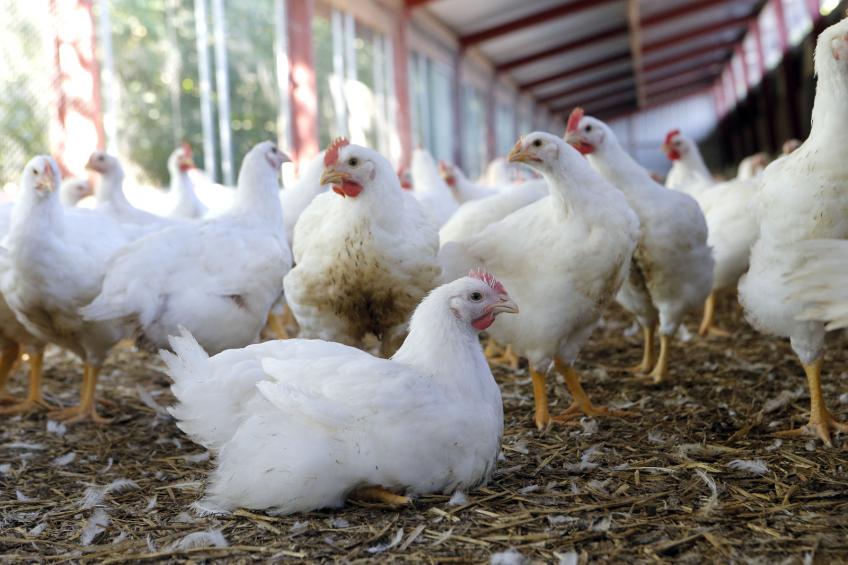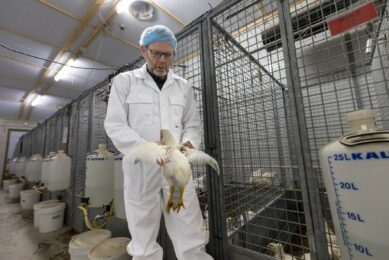Main EU producers focus on prospects of differentiation

There is no question that the ?production of conventional broiler chickens for mainstream markets all around the world has a bright future. However, a new mainstream is ?emerging – the market for premium chickens. During the first Hubbard Premium Forum the main producers in Europe of these type of chickens exchanged knowledge and shared results on what has become far beyond a niche market.
Differentiation is the name of the game when it comes to the European poultry market. Consumer demands are changing with more attention paid to animal welfare, the use of antibiotics in animal production has to come down to a minimum level due to societal demands and government legislation. Also, supermarkets are moving more and more from anonymous bulk products to added value upper market products.
Wilbert Hilkens from ABN-Amro bank researched consumer behaviour and looked five years ahead. “Price still is an important factor when someone is buying poultry meat, but consumers prefer meat concepts with unique selling points such as taste, ease of use and with benefits for health of unique origin. On top of that the welfare and environmental aspects of production are a nice add-on.”
Shift to added value broiler meat essential for profitability
When it comes to production in Europe a shift to added value broiler meat is essential for profitability. Agricultural economist Peter van Horne showed that third countries have significantly lower production costs on farm and at slaughter. Compared to Brazil and Argentina the EU is about 30% more expensive and compared to Ukraine and the US about 20-25%.
“At this time quota and import levies protect the EU from large volumes of import of poultry meat, but seeing what is on the negotiating table on world trade level (for instance TTIP) one can foresee scenarios with lower import levies and more market access for third countries.” The weaker competitive position for the EU poultry meat industry is a threat for conventional production, according to Van Horne.
Not leading on cost price
It may be so that ‘feeding the hungry world’ is top of mind with many, but the question is if Europe has to feed the whole world? Europe has the technical know-how to produce at least part of the world’s meat demand, but on cost price it is not leading. And societal demands won’t allow the European producers to go to the proverbial maximum production possible. Even within the existing legal constraints the industry is facing headwind, especially from animal welfare and animal rights organisations. And the pressure groups have success. By targeting individual retailers they convinced them to replace the conventional chicken meat by meat from slower growing, less densely stocked birds.
Market leader Albert Heijn supermarket in the Netherlands sells meat of a slower growing broiler (max 50 grammes of average daily growth) kept in an enriched environment at a maximum stocking density of 38 kilo’s per square metre as their basic product. Competitor Jumbo supermarket even chooses as a basis for a maximum of 45 grammes a day with 30 kilo’s stocking density kept in daylight.
That also means that Dutch farmers producing for these supermarkets lost the cost price rat race, the slower growing birds lead to a 20% hike in production costs, leading to a price rise of €1,75 per kilo breast meat. Paul van Boekholt of Hubbard states, “Consumers in Europe are willing to pay extra for value added meat, especially when it is marketed in a specific way. With households spending up to $US500 per week for food alone that can not come as a surprise.
That said, also in the slow growing markets there should be a continuous focus on cost price. Within it’s constraints it has to be super-efficient. Marketing wise, the consumers have to be continuously educated about the quality of the product, as they should also be educated about the cost of it!”
Room for differentiation
The marketing supporting product differentiation will be helped by the development of the conventional broiler on the one hand and the restructure of supermarkets on the other.
Van Boekholt explains: “In 1992 the conventional broiler took 46 days to reach its targeted slaughter weight, opposed to 56 days for the slow growing certified bird and 81 days for the label chicken. Nowadays the conventional bird is kept only 35 days and we foresee that in 2020 that will be only 32 days.” The age gap between conventional broilers and 56-day broilers is growing, allowing for more differentiation.”
“An EFSA report from 2010 showed that 7% of all broiler parent stock in the EU was for the production of slow(er) growing broilers and that developed fast with initiatives such as the Dutch ‘Chicken of Tomorrow’, the French ‘Certifé’, the British ‘RSPCA Freedom Food’, the German ‘Tierschutzlabel’ and the Dutch ‘Beter Leven’ mark. “France has always had a focus on cuisine and tradition and 35% of all breeders are producing slow(er) growing broilers, but the Netherlands is at the forefront of recent development with the ‘Chicken of Tomorrow’ which should replace all conventional poultry meat by 2020, as agreed between the poultry sector and all supermarkets.”
Supermarkets to become specialty shops
Banker Wilbert Hilkens sees other movements in the supermarket sector which are favourable towards added value products as well. “‘Fresh foods in 2020’ is about changing consumer preferences and its implications for the supply chains of meat, eggs and vegetables. Well educated and higher income consumers look for something extra in meat, such as better taste, known origin and intrinsic value of good production.”
Even more important is the supermarket sector tuning in to those demands: “Supermarkets will become more and more specialty shops, places of inspiration and taste experience. Actual food delivery will move more and more to home delivery and pick up points after internet orders. Products with the ‘right story’ and a meat supply chain which is in touch with the challenges of food retail and food service will be successful. The world of consumers is on the move and that is more an opportunity than a challenge.”
Join 31,000+ subscribers
Subscribe to our newsletter to stay updated about all the need-to-know content in the poultry sector, three times a week. Beheer
Beheer








 WP Admin
WP Admin  Bewerk bericht
Bewerk bericht